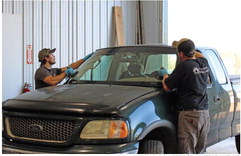Prepare ahead for changing road conditions


The chance to take in idyllic landscapes and sunsoaked views is a big part of what makes road trips so appealing. When traveling during certain times of year, such as spring and f...


The chance to take in idyllic landscapes and sunsoaked views is a big part of what makes road trips so appealing. When traveling during certain times of year, such as spring and f...